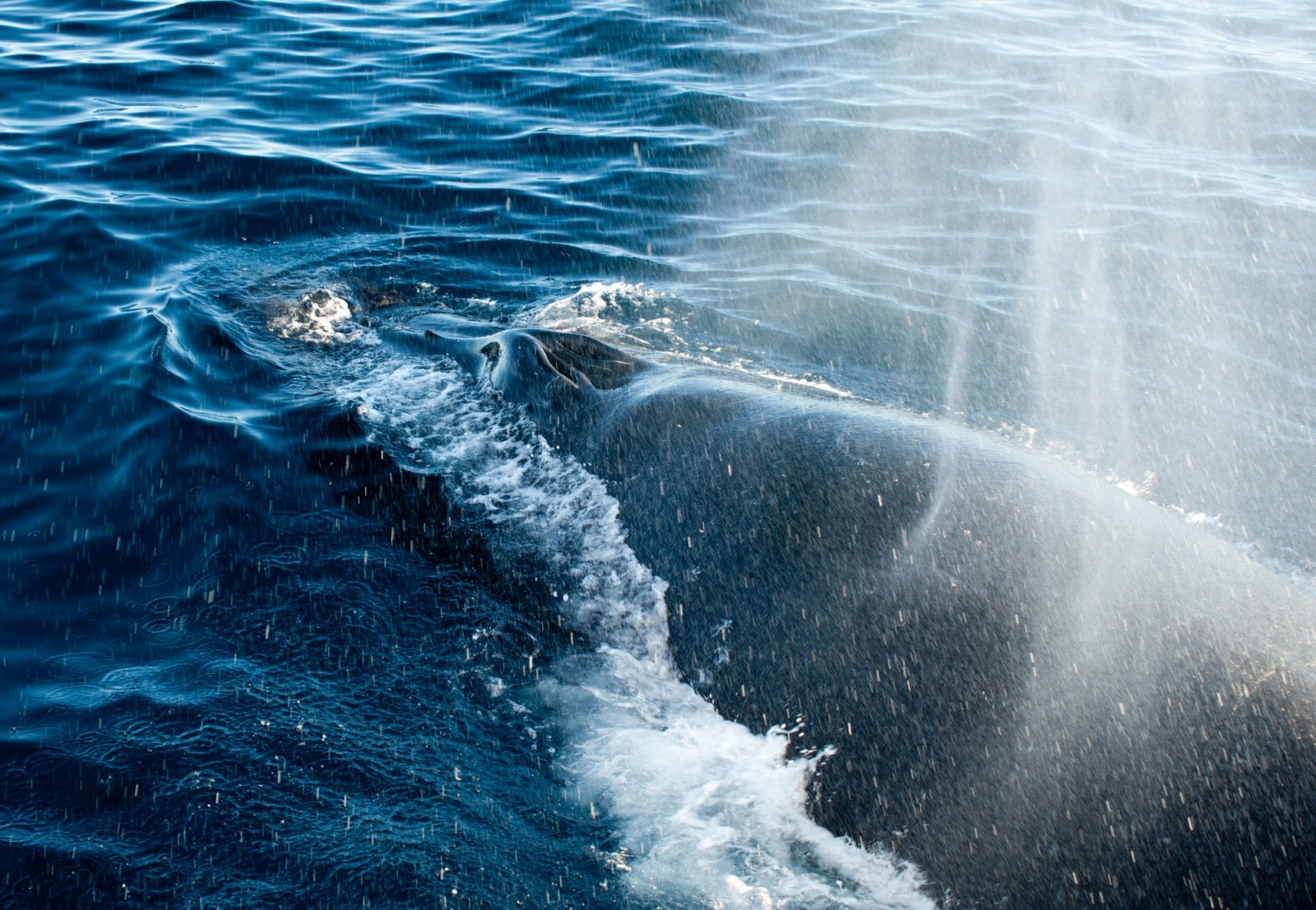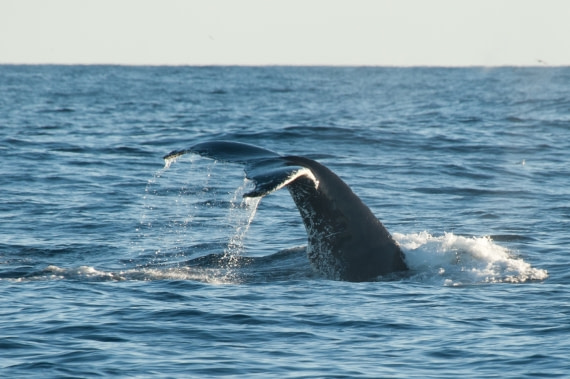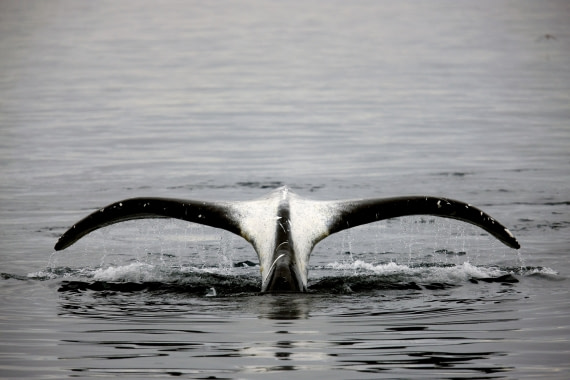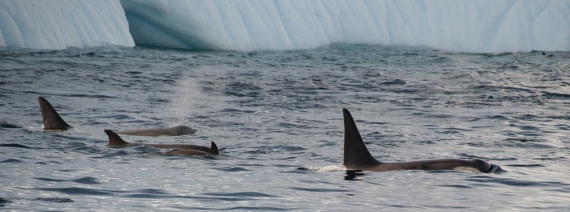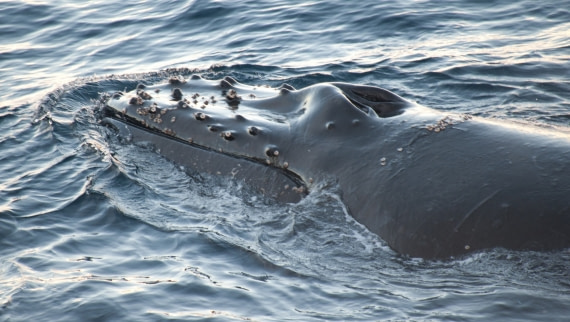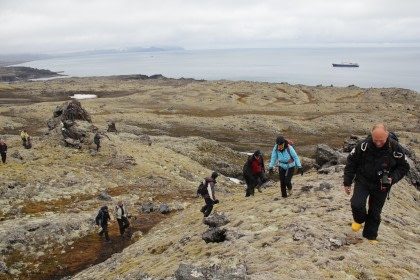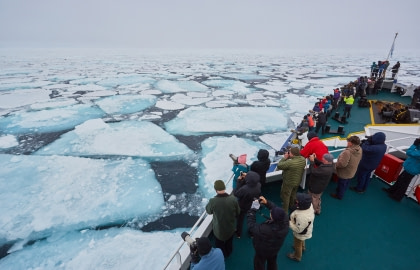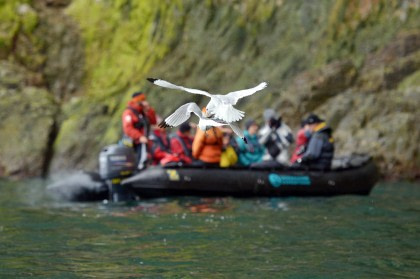Whale safari
One of the greatest sources of joy and wonder found on our cruises is when we make contact with the gentle giants of the seas, the whales. It’s really something special to make a connection with these creatures; it’s something even our experienced crew members never get tired of.
“What Kinds of Whales Will I See?”
This depends entirely on which cruise you take and at what time of year. Some whales migrate vast distances, some stay (relatively speaking) in the same region the year round. Some are curious and friendly, and some prefer to be left alone. Some are solitary while others travel in big pods.
For example trips that take us around Northern Europe can lead to sightings of Minkes, Bowheads, Humpbacks, Blues, and Orcas. A trip into Antarctic waters can also produce Minkes, Humpbacks, and Orcas.
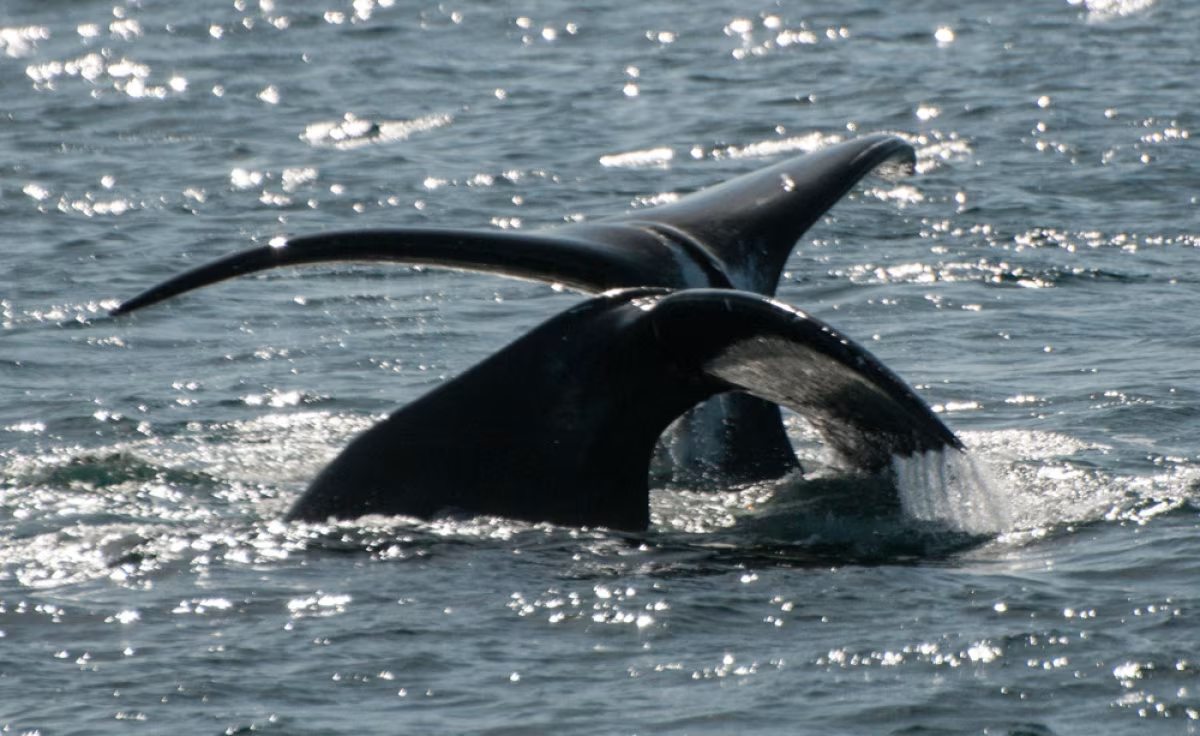
Bowhead whales © Phil Wickens-Oceanwide Expeditions
17 whale species in the Artic
The Arctic is Home to 17 Whales Species – There are 17 whale species living in the Artic, including the Bowhead, Orca, Humpback, Beluga and Narwhal.
Ten Whales Are Prevalent Near Greenland – The best time to see whales during a Greenland expedition is from May – September. The whales that are most prevalent during this time are Bowhead (early season), Fin, Narwhals (north and east Greenland), Humpback, and Minke whales. Other species that may be seen are Sperm whales, Harbour porpoise, Blue whales, Beluga, and Killer whales.
There Are Two Main Types of Whales within the Arctic – The whales within the Arctic are divided into two categories: toothed whales and baleen whales. Toothed whales such as Orcas, Narwhals and Belugas have teeth. Baleen whales have baleen plates in place of teeth, and these species include the Bowhead, Minke and Gray whales.
The Arctic Waters Provide a Birthing Spot for Some Whales – Many of the 17 whale species such as the beluga and narwhal remain within the Arctic waters all year. However, a few species come to the Arctic specifically to give birth, including the Gray and Humpback whales.
Whales Weight & Lenght
Because there are so many different types of whales, they have a large weight span that ranges from 20 to 200 tons. The Gray whale typically averages 40 tons, and Bowhead whales have been known to reach 100 tons.
Polar Region Whales Are Typically 13 – 30 meters (45-100 Feet)– The length of the various whales within the polar regions is just as varied as their weight. Fin whales can get as long as 24 meters (80 feet). However, there are some marine mammals within the whale family that are smaller than average. For example, Narwhals do not usually grow longer than 5 meters (17 feet).
Eight Whale Species in Antarctica
Within the Antarctic region, there are eight whales that expedition participants may encounter: Orca, Right, Sei, Blue, Sperm, Fin, Minke and Humpback whale.
Blue Whales Are the Largest Creatures in Existence - Blue whales can become as large as 200 tons, and each calf has the ability to put on up to 100 kg (200 pounds) per day. The average length of a Blue whale ranges from 25 to 26.2 meters.
Fin Whales Have an Amazing Decibel Range - Fin whales are capable of producing sounds within a range of 75-80dB at approximately 100 Hz. Before propellers became commonplace in the ocean, these sounds could easily travel more than 100km.
Female Orca Whales Go Through Menopause - Orca whales, also known as Killer whales, are one of less than a handful of species that go through menopause. The average age is 35, but it can happen anywhere between a female whale’s 30s and 50s. Once they hit menopause, female orcas typically become pod leaders.
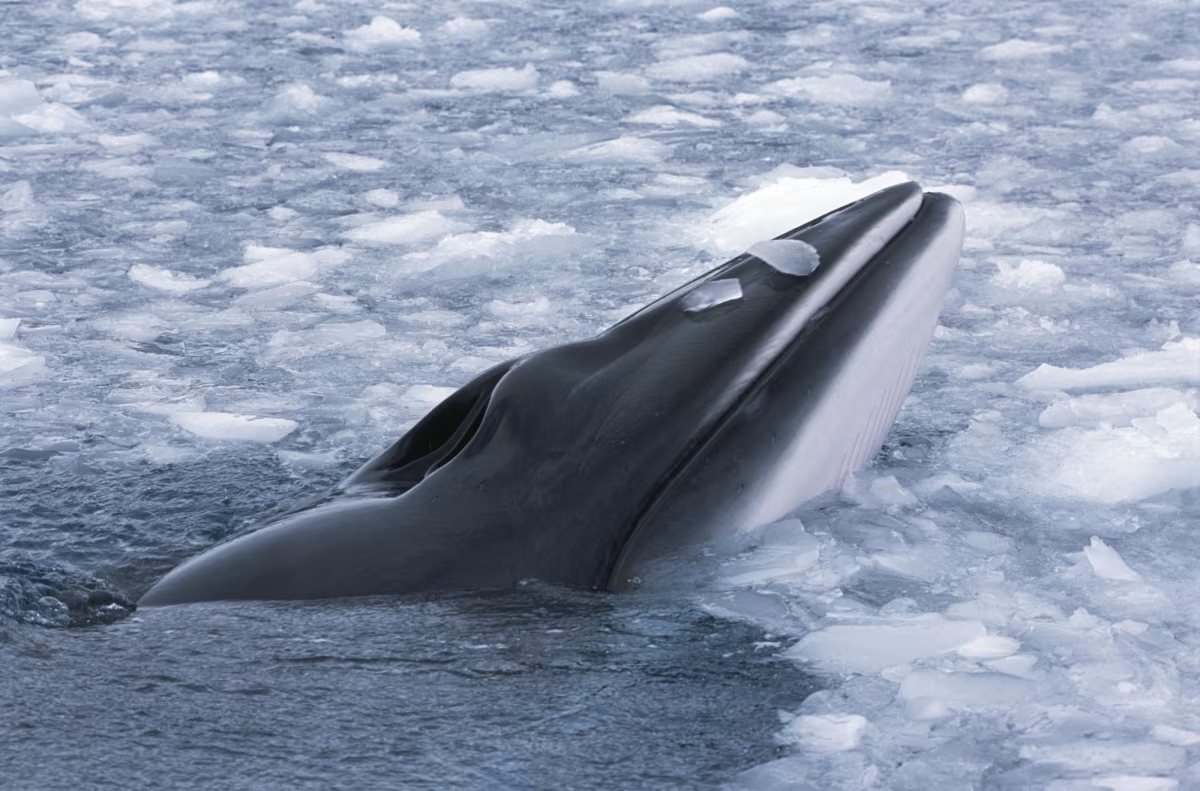
Minke whale © Rinie van Meurs-Oceanwide Expeditions
Spot the gentle giants of the seas
Whale watching trips are specially designed to be able to search for whales, in the coastal waters of Greenland, during the crossing from Fair Isle, via Jan Mayen to Spitsbergen, but also in Antarctica. As with all of our offerings, we want to make sure you get the most out of your whale-oriented cruise. With that in mind we’d like to offer you the following tips.
Prepare for the Weather and the Environment
There isn’t anything out on the water to block the wind, so make sure you dress in an appropriate fashion. Also, the windier it is the more chance there is of you getting splashed, so you’re going to want to have a water-proof outer layer.
At the same time you’re completely exposed to the sun so a hat with a brim and sunscreen are also good ideas. Bring along good sunglasses as well; the light bouncing off the water can become quite piercing and you’re going to have a harder time watching for whales if you have to continually squint and shield your eyes.
Photographing whales
The first tip here is to bring extra batteries! You’ll probably want to bring extra film or digital storage as well.
The second tip is to bring waterproof bags or containers for all of your gear, including the spare batteries. Chances are there is going to be at least a little bit of splash when you’re out on a Zodiac. Also, bring a lens-friendly cloth or rag to wipe away spray.
Third – bring a neck strap. The water rolls, your hands might be cold, and if you drop your camera you’re not going to get it back.
Lenses - A zoom lens can be your friend on the water. Many pro photographers don’t care for zooms, preferring the quality of single-length lenses. However whales don’t take modelling instructions very well and refuse to stay still. So you don’t want to be caught trying to swap lenses when a whale swims closer to your Zodiac to make an investigation. Try a lens in the 70-250 mm range.
Along those lines, don’t use up all of your film or storage when the whales are still in the distance. Depending on the species some are quite curious and friendly so you may have a chance to snap some pictures closer up.
Most people are using digital cameras. If your camera lets you take a number of shots with one press of the button (sometimes referred to as a “burst” setting) you should take a look at getting storage disks that have a fast write speed.
Do you know about polarised lenses? These are special lenses that let you see into the water, as opposed to only seeing the surface of the water and nothing underneath. They’ll also help you deal with sunlight coming more or less directly at the lens which can wash a picture out. So if you can afford to spring for a polarised lens we suggest you bring one along.
As for the perfect action shot you’re looking for a breach (when whales first pop out of the water). Unfortunately there is no way to predict this, so it’s really just a matter of luck. You’ll have a better chance if the whales are doing repeat breaches which they do sometimes if they’re feeding or even just for fun.
Another neat shot to get is when the whales dive. If you time it right you can get a shot right when the whale’s exposed tail makes its final flick before it submerges completely. You can get a nice spray of water droplets in the frame if you time it just right. Practice!
In terms of video, it’s best to keep your frame a little wider (not fully zoomed in). You’re on water and it will be impossible to get a completely still shot. The wider your frame, the less rocking motion in your shot.
ISO – ISO is a film’s graininess, or a digital camera’s equivalent setting, both relating to how much light is needed to get a viewable shot. Generally speaking the less light that is available the higher the ISO number. Start with a 400 ISO. If you’re a complete neophyte, look on your (digital) camera for an “action” or “sports” setting and give that a try.
Speed - If you’re lucky enough to get whales doing multiple leaps out of the water then you should try a shutter speed of around 1000.
